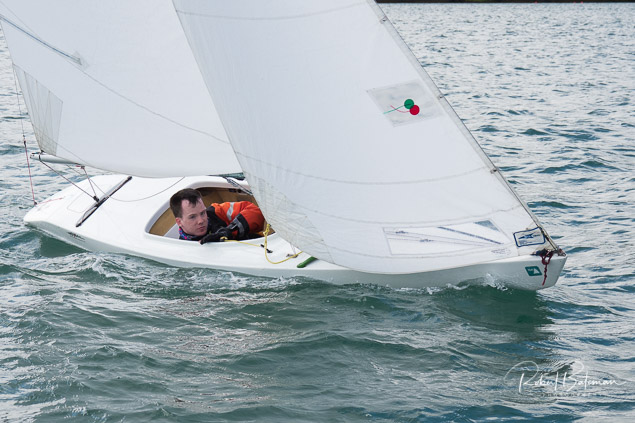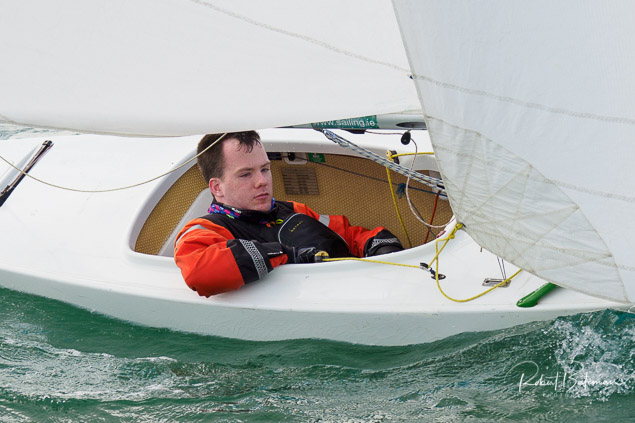Displaying items by tag: 24mR
With four straight wins, Britain's Megan Pascoe won Sunday's Irish 2.4mR Championships 2023 held in Dun Laoghaire Harbour.
As Afloat reported previously, Saturday's first day of racing in the one-person keelboat event was lost to strong winds.
The National Yacht Club hosted championships attracted sailors from the UK and Netherlands, including the previous world champion Pascoe.
 Second overall at the Irish 2.4mR Championships 2023 held in Dun Laoghaire Harbour was Steve Bullmore from Spinnaker SC (GBR 1039) Photo: Afloat
Second overall at the Irish 2.4mR Championships 2023 held in Dun Laoghaire Harbour was Steve Bullmore from Spinnaker SC (GBR 1039) Photo: Afloat
British sailors also took second and third overall, with Steve Bullmore from Spinnaker Sailing Club winning silver and John Patrick from Blue Circle Cruising & SC taking bronze in the 13-boat fleet.
 Sneek sailed by Dutch sailor Pieter Visser (NED 59), competing at the Irish 2.4mR Championships 2023 held in Dun Laoghaire Harbour Photo: Afloat
Sneek sailed by Dutch sailor Pieter Visser (NED 59), competing at the Irish 2.4mR Championships 2023 held in Dun Laoghaire Harbour Photo: Afloat
Results below
First Races of the Irish National 2.4mR Championships are Cancelled Due to Strong Winds
The first day of racing at the Irish National 2.4mR one-person keelboat Championships at Dun Laoghaire Harbour has been cancelled today due to strong winds.
The championships have attracted sailors from the UK and Netherlands, including the previous world champion Megan Pascoe.
"Sailing today has been cancelled due to the high westerly winds, so we are really looking forward to getting out racing tomorrow," regatta organiser Maureen Prendergast told Afloat.
Belfast Lough Sailability Celebrates Successful President’s Cup This Autumn
Belfast Lough Sailability has had a lot to celebrate in recent months with sailors taking part in the 2022 President’s Cup, Hansa Irish Championships and 2.4mR Irish Nationals.
In August, Belfast Lough Sailability hosted the 2022 President’s Cup which incorporated the Hansa Irish Championships and 2.4mR Irish Nationals. The event was organised in partnership with Carrickfergus Sailing Club, with significant planning, sponsorship and organisation required.
The President’s Cup is the only event of its kind where people with disabilities and able-bodied sailors sail together in competition and the helm of each boat must have a disability.
The event has representation from the four provinces across Ireland. Team Ulster consisted of competitors from Belfast Lough Sailability, Foyle Sailability and Lough Erne Sailability.
With favourable weather conditions, the 47 competitors across 25 boats were able to showcase their skills gained through training and delivered a colourful and eventful spectacle for supporters and spectators.
 Boats at Carrickfergus Sailing Club which co-hosted the 2022 President’s Cup with Belfast Lough Sailability
Boats at Carrickfergus Sailing Club which co-hosted the 2022 President’s Cup with Belfast Lough Sailability
Racing was competitive, with Team Ulster successfully retaining the 2022 President’s Cup. The region also hailed success in the Hansa Irish Championships, with Sophie McClenaghan of Belfast Lough Sailability taking the Best Girl Helm (U18) trophy and Willie J Thompson (also Belfast Lough Sailability) the boys’ equivalent. Meanwhile, Belfast Lough’s John Patrick took first place in the 2.4mR Irish Nationals.
David Todd, chair of Belfast Lough Sailability said: “Sailing is an activity that is enjoyed by a variety of people but is not readily accessible to most of the community and certainly not to those members of the community with disabilities.
“Belfast Lough Sailability, based at Carrickfergus, Co Antrim, offers access to the sea to those in the community who would not normally have that opportunity and promotes equality of opportunity by providing education and training to people with disabilities in a safe and enjoyable environment.”
The spokesperson added: “This was a very successful event but it’s not all about winning. The benefits of having the opportunity to participate in an event representing your province or in a national event are far reaching for each participating individual. Competitors — both helms and crew — will benefit from increasing their skills through training and education to sail competitively. This includes significant positive impact on each individual’s confidence and self-esteem.
“They will aspire to represent their club, county, province and country at other levels of competition. They will also inspire others with disabilities and from disadvantaged backgrounds to participate in the healthy sport of sailing; and to undergo training and education to increase their skills.”
2.4mR Irish Champions are Crowned at the National Yacht Club
John Patrick (left) from Belfast Sailability was the winner of the 2.4mR National Championships held at the National Yacht Club at Dun Laoghaire Harbour at the weekend.
A small fleet of five competitors (from a total fleet of eight boats in the country) raced for both Open and Para titles.
The National's Ed Totterdell was the Race Officer with four races sailed on Saturday and two on Sunday, all inside the harbour.
The open event was won by John Patrick from Belfast Sailability with Patrick Hassett in second and Oisin Putt in third place both from NYC.
The Para event was won by Patrick with Oisin second.
 John Patrick (right) from Belfast Sailability was the winner of the Open Division of the 2.4mR Nationals held at Dun Laoghaire Harbour and receives his prize from National Yacht Club Commodore Conor O’Regan
John Patrick (right) from Belfast Sailability was the winner of the Open Division of the 2.4mR Nationals held at Dun Laoghaire Harbour and receives his prize from National Yacht Club Commodore Conor O’Regan
 Patrick Hassett (right) is congratulated by National Yacht Club Commodore Conor O’Regan for his overall win of the 2.4mR Nationals (Para division) at Dun Laoghaire Harbour
Patrick Hassett (right) is congratulated by National Yacht Club Commodore Conor O’Regan for his overall win of the 2.4mR Nationals (Para division) at Dun Laoghaire Harbour
British Sailors Dominate International 2.4mR Open Championships at Kinsale
Ireland was outclassed as British boats took the podium places at the International 2.4mR one-person keelboat Irish Open Championships at Kinsale Yacht Club today.
Megan Pascoe, a past World and European champion in the class, dominated the four-race event with four straight wins and was followed by Katherine Hedley with four seconds. Brian Harding was third. The top Irish sailor was John Patrick in sixth place overall.
Five UK visitors travelled to Kinsale for the championships.
With Saturday's racing washed out as Afloat reported here, the pressure was on to complete all racing today in the ten-boat fleet.
It is the first time the event was held on the south coast with last year's championships held on Carlingford Lough.
Sunday dawned with a flat calm but racing soon got underway with London 2012 Olympic Race Officer Jack Roy in charge.
Races were each of 40 minutes duration in the 10-knot winds from the northwest.
At the first start, the wind took a big shift moving from NW more into the north and so Roy abandoned that start to allow the course be moved.
Results are here.
The boat is primarily used for racing and the class holds highly competitive national events in many countries. In some countries, it features mainly as a class for sailors with a disability.
The 2.4mR is ideal for adapted sailing since the sailor does not move in the boat, and everything is adjustable from right in front of the sailor. Both hand-steering and foot-steering are possible.
Scroll down for photo gallery by Bob Bateman
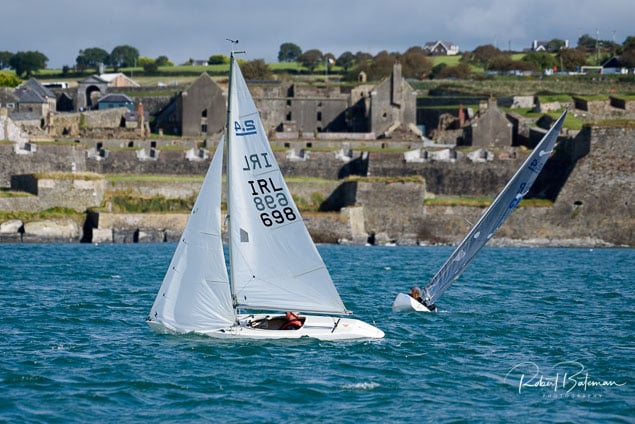 Top Irish sailor John Patrick against the backdrop of Charles Fort
Top Irish sailor John Patrick against the backdrop of Charles Fort
 Adam Billany
Adam Billany
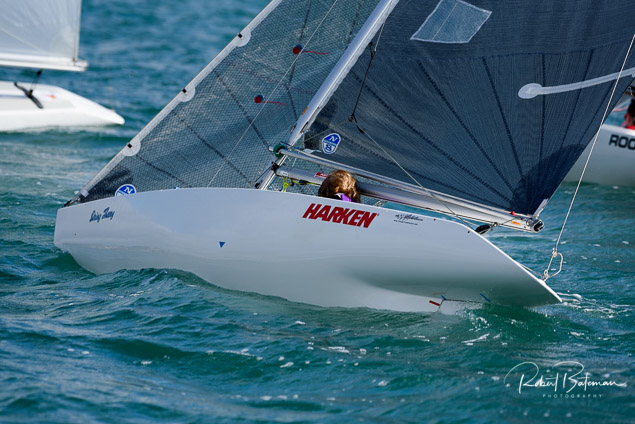 Katherine Hadley
Katherine Hadley Sunlight and shadows
Sunlight and shadows
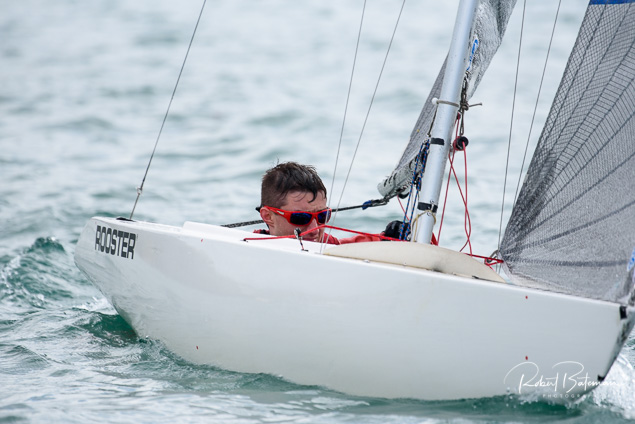 Adam Billany
Adam Billany
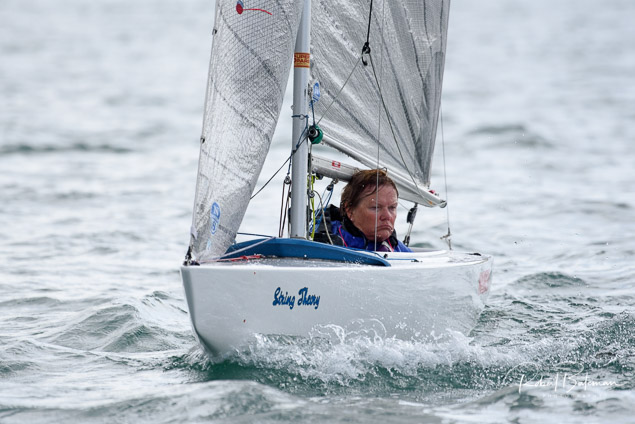 Katherine Hadley
Katherine Hadley
 Adam Billany
Adam Billany
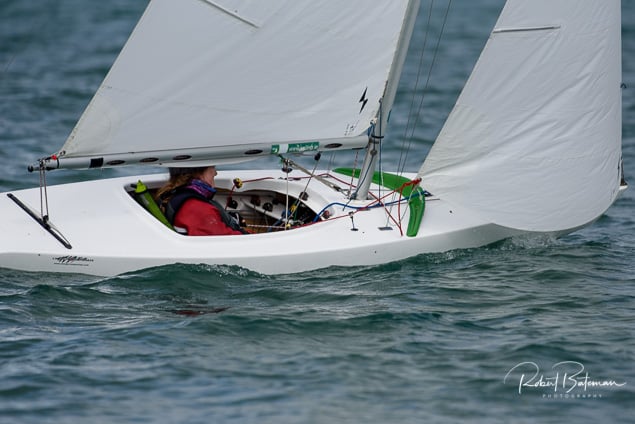 Georgina Griffin
Georgina Griffin
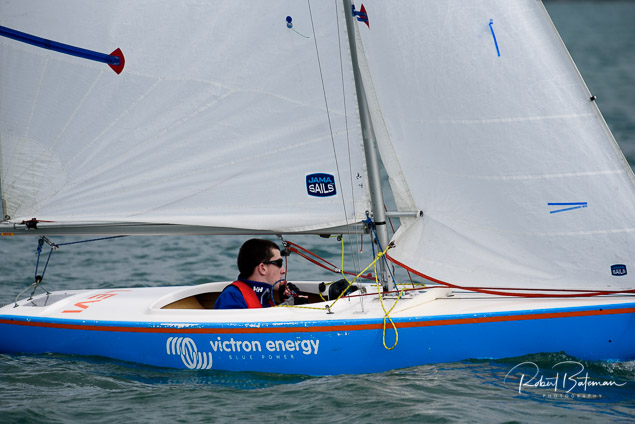 Patrick Hassett
Patrick Hassett
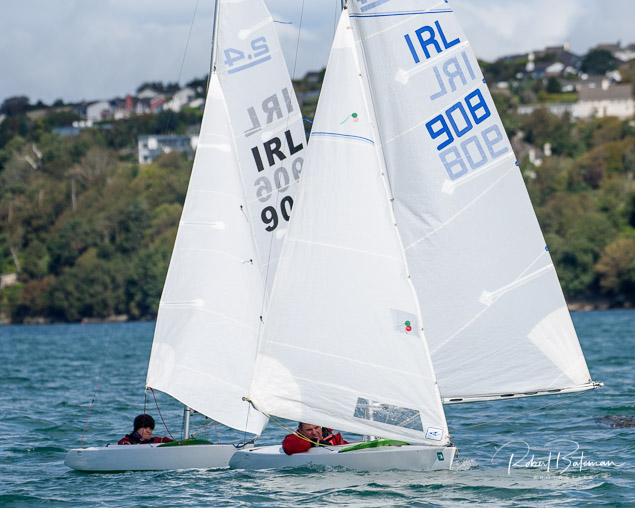
 Winner Megan Pascoe
Winner Megan Pascoe
 Brian Harding and Adam Billamy
Brian Harding and Adam Billamy
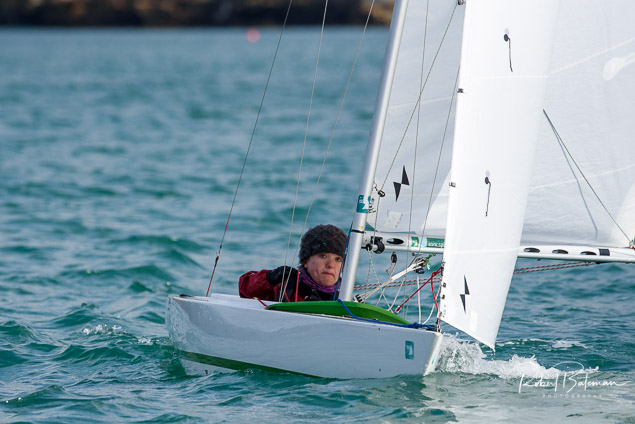 Gina Griffin
Gina Griffin
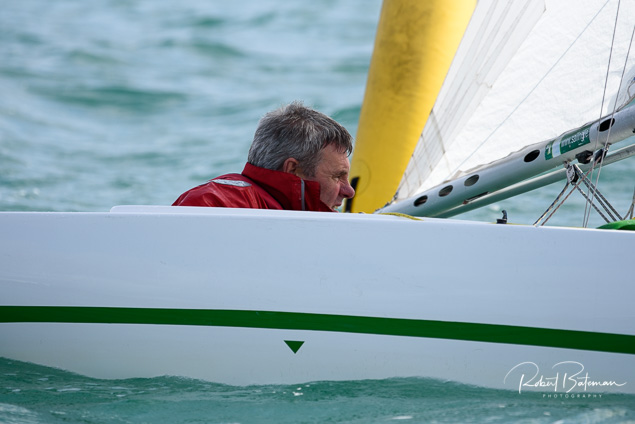
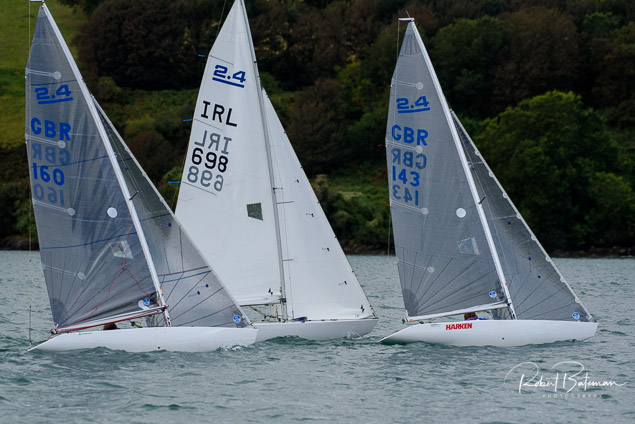
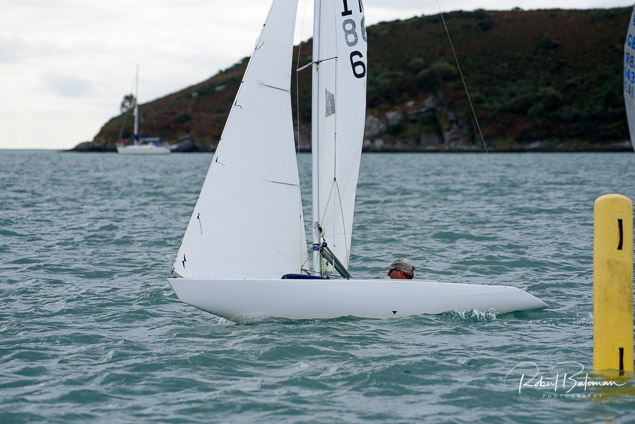
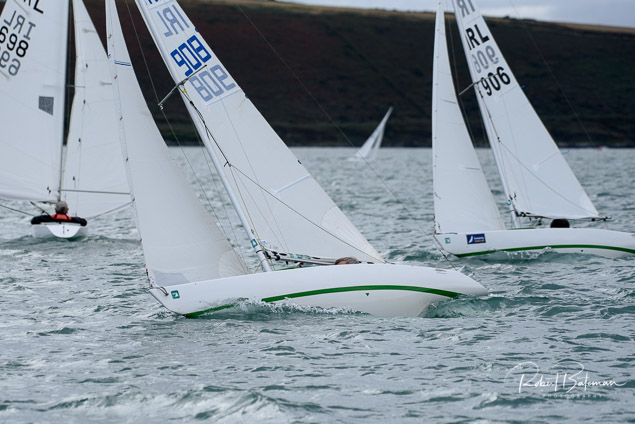

 A group of GBR visitors with Donal Hickey
A group of GBR visitors with Donal Hickey
 Sailability Leader in Kinsale Donal Hickey
Sailability Leader in Kinsale Donal Hickey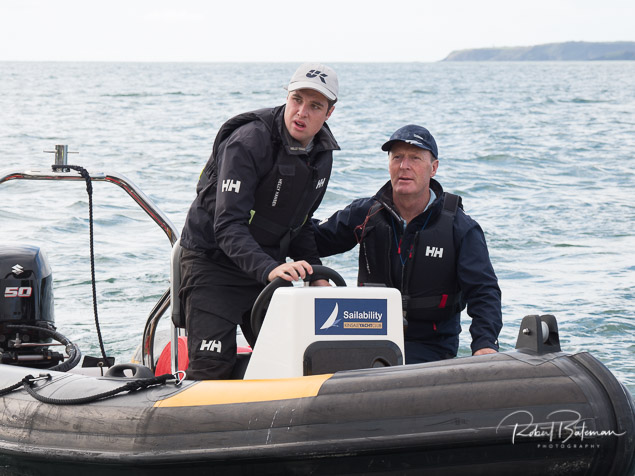

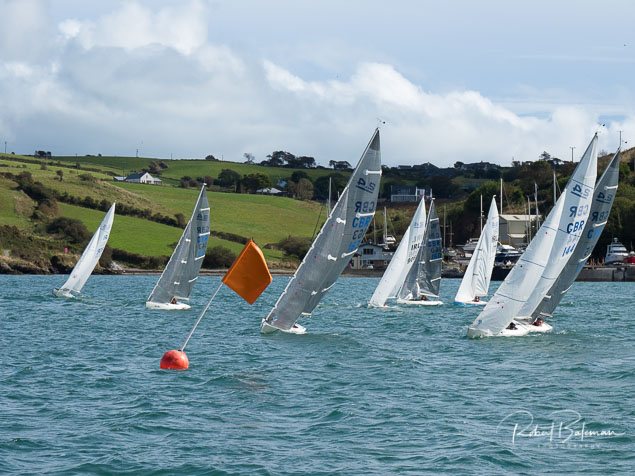
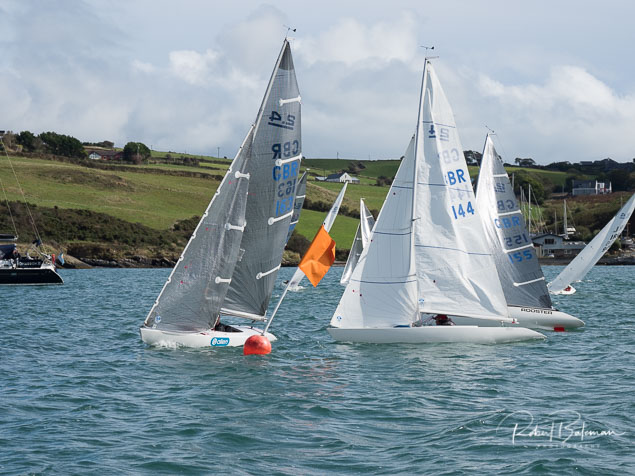
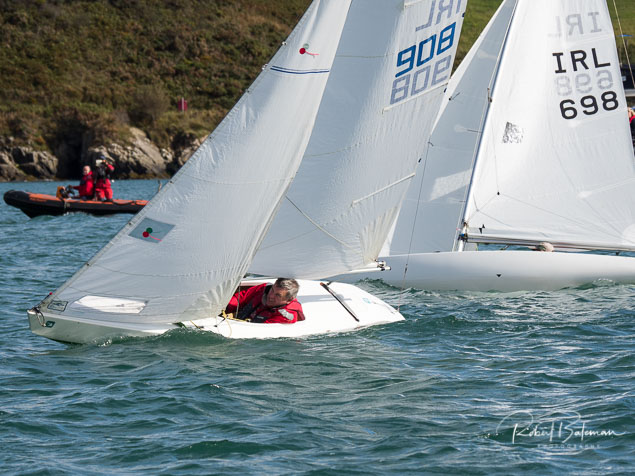
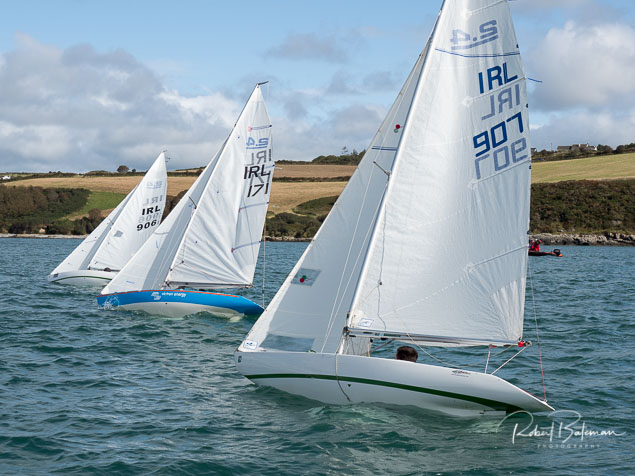
 The Race team Jack and Rosemary Roy, Commodore David O’Sullivan and Mel McIlwaite
The Race team Jack and Rosemary Roy, Commodore David O’Sullivan and Mel McIlwaite
